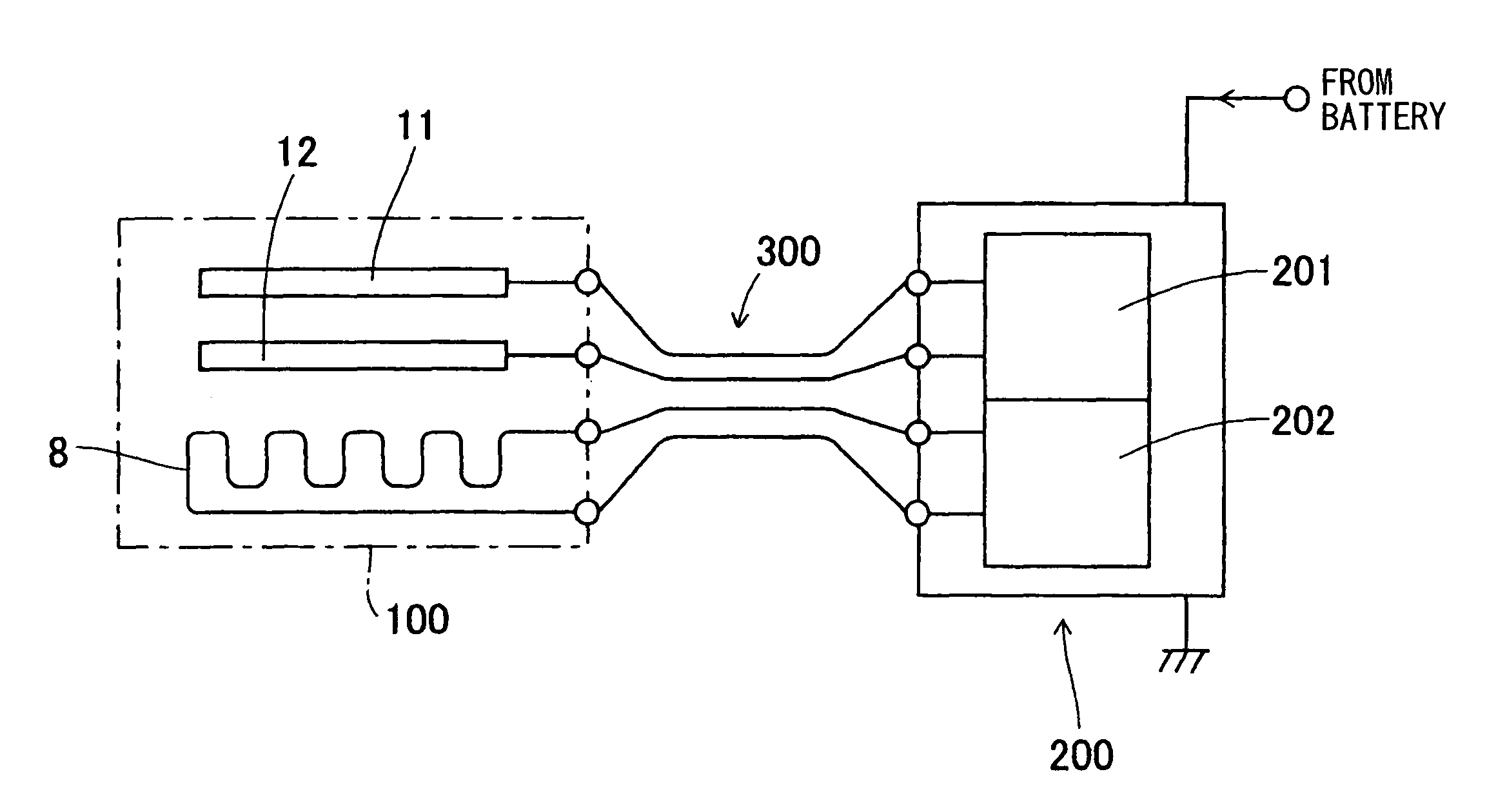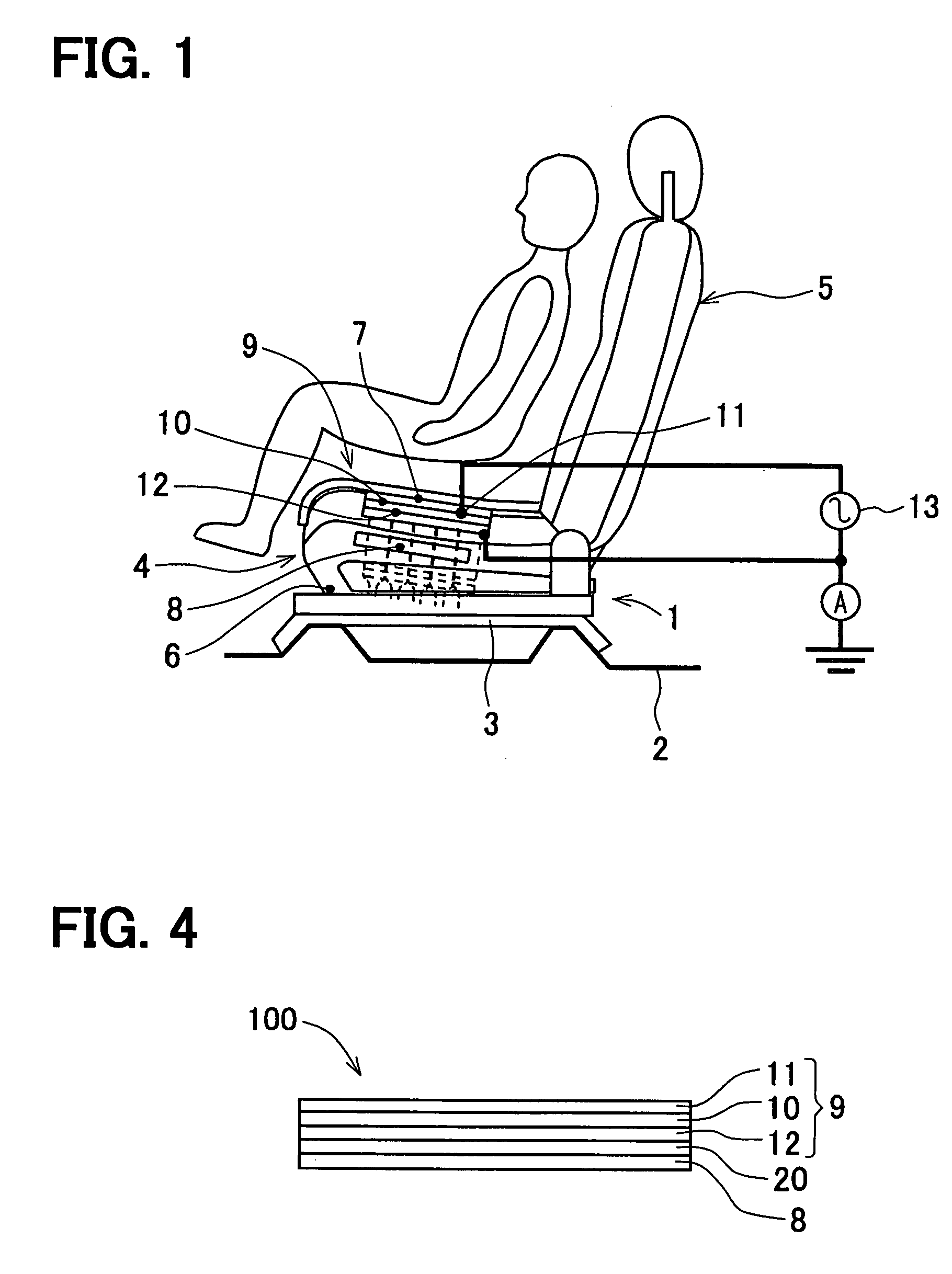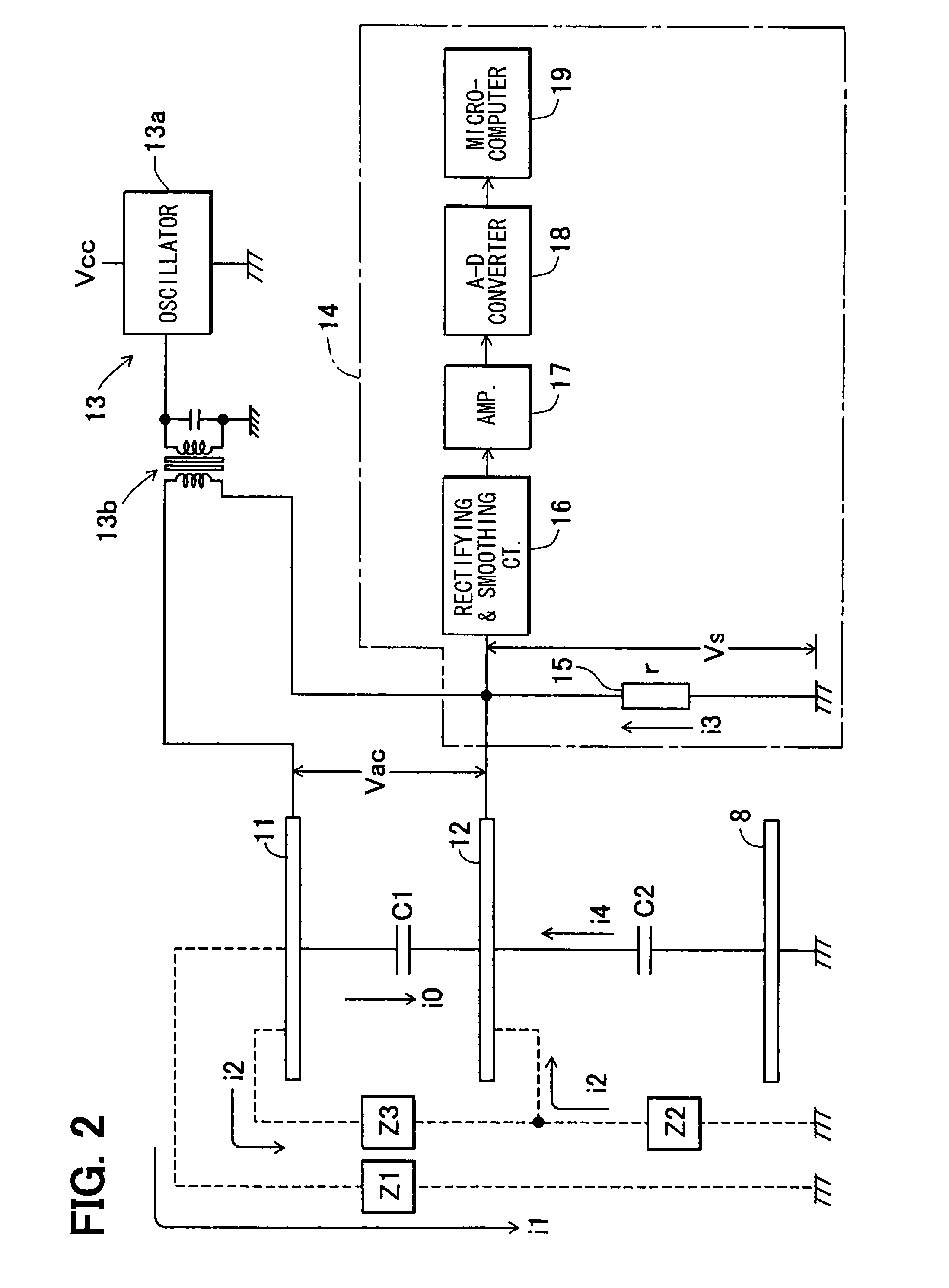Passenger seat having occupant detector for automotive vehicle
a technology for automotive vehicles and passenger seats, applied in the direction of chairs, heater elements, manufacturing tools, etc., can solve the problems of large capacitance (referred, heater capacitance) and hinder the flow of electric flux lines, and achieve the effect of efficient manufacturing
- Summary
- Abstract
- Description
- Claims
- Application Information
AI Technical Summary
Benefits of technology
Problems solved by technology
Method used
Image
Examples
first embodiment
the present invention will be described with reference to FIGS. 1 and 2. First, referring to FIG. 1, a seat device 1 having an occupant detector will be described. The seat device 1 is positioned on a metallic frame 3 of a floor 2 of an automotive vehicle. The passenger seat is composed of a seat 4 and a seat-back 5 that supports a passenger's back.
The seat 4 includes a cushion pad 6 made of a material such as hard foam-urethane fixed to the frame 3, a cushion cover 7 covering an upper surface of the cushion pad 6, a seat heater 8 embedded in the cushion pad substantially in parallel to the seat surface, and an electrode unit 9 disposed between the cushion cover 7 and the seat heater 8. The seat heater 8 is made of a sheet having a plane electric resistor or plural resistor wires and is disposed substantially in parallel to the seat surface. The seat heater 8 may be extended to the seat-back 5. Heating power is supplied to the seat heater 8 from a direct current power source such as...
second embodiment
the present invention will be described with reference to FIG. 3. In this embodiment, the alternating power source 13 of the first embodiment is replaced with a power source 130. The power source 130 is composed of a oscillator 13a and a voltage follower circuit 13c. Other structures are the same as those of the first embodiment. An alternating voltage Vac is supplied to the upper electrode 11, and a voltage, which is made substantially equal to the voltage Vac through the voltage follower circuit 13c, is supplied to the lower electrode 12. In this manner, the impedance Z3 can be neglected. When the seat is occupied, the impedance Z1 decreases, causing increase in current i1. The increase in i1 results in increase in i3 and increase in a signal voltage Vs. In the second embodiment, an amount of changes in the signal voltage Vs due to occupancy of the seat can be made larger than that in the first embodiment.
third embodiment
the present invention will be described with reference to FIG. 4. In this embodiment, a heater-electrode unit 100 is embedded in the seat. Other structures and functions are the same as those of the first embodiment. The heater-electrode unit 100 includes: the electrode unit 9 composed of the upper electrode 11, the insulating film 10 and a lower electrode 12; a seat heater 8; and an insulating layer 20 disposed between the electrode unit 9 and the seat heater 8. All of these components are integrally formed in the heater-electrode unit 100 as a single body. The insulating film 10 and the insulating layer 20 may be made of the same material having the same thickness. However, it is preferable to form the insulating layer 20 with a material having a lowest possible relative dielectric constant and a thickness thicker than that of the insulating film 10. This results in decrease in capacitance C2 and increase in an amount of changes in the signal voltages Vs due to occupancy. The heat...
PUM
| Property | Measurement | Unit |
|---|---|---|
| thickness | aaaaa | aaaaa |
| electric current | aaaaa | aaaaa |
| alternating voltage | aaaaa | aaaaa |
Abstract
Description
Claims
Application Information
 Login to View More
Login to View More - R&D
- Intellectual Property
- Life Sciences
- Materials
- Tech Scout
- Unparalleled Data Quality
- Higher Quality Content
- 60% Fewer Hallucinations
Browse by: Latest US Patents, China's latest patents, Technical Efficacy Thesaurus, Application Domain, Technology Topic, Popular Technical Reports.
© 2025 PatSnap. All rights reserved.Legal|Privacy policy|Modern Slavery Act Transparency Statement|Sitemap|About US| Contact US: help@patsnap.com



